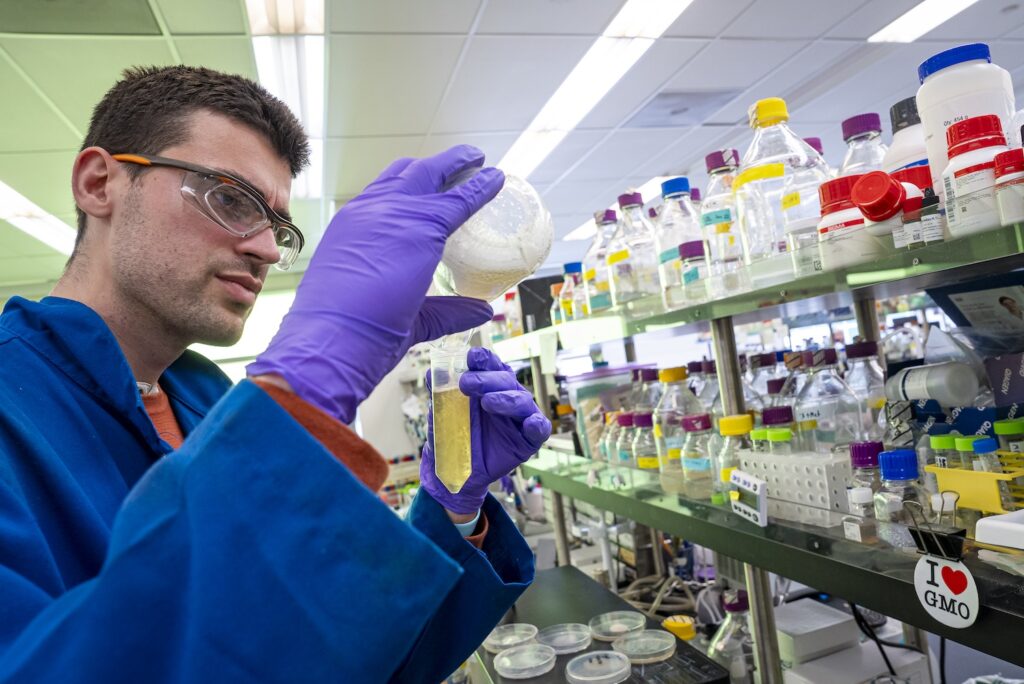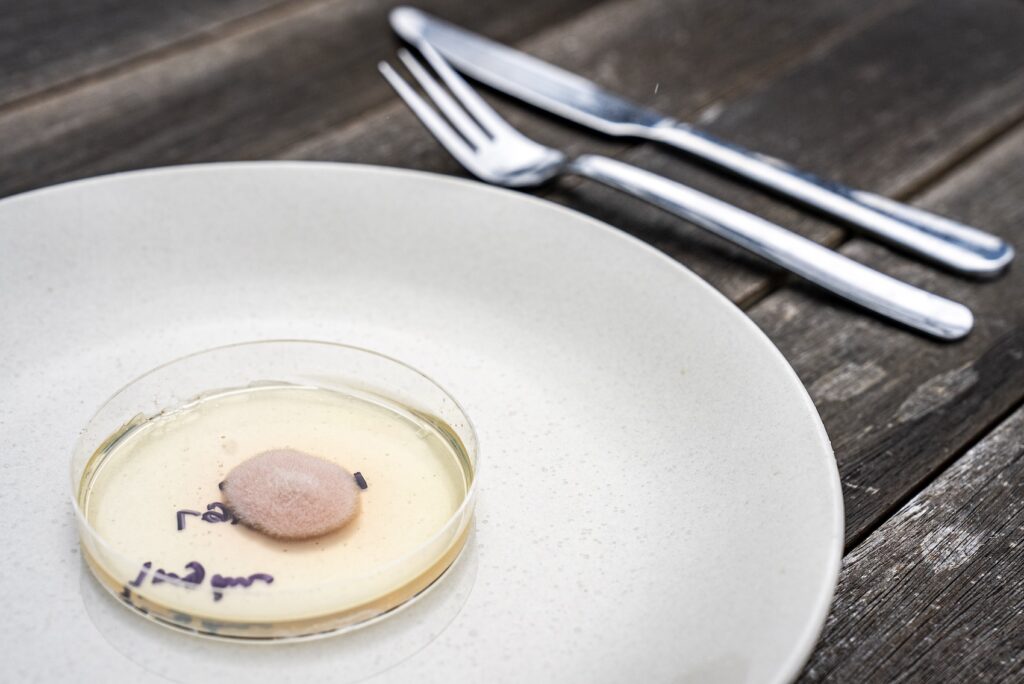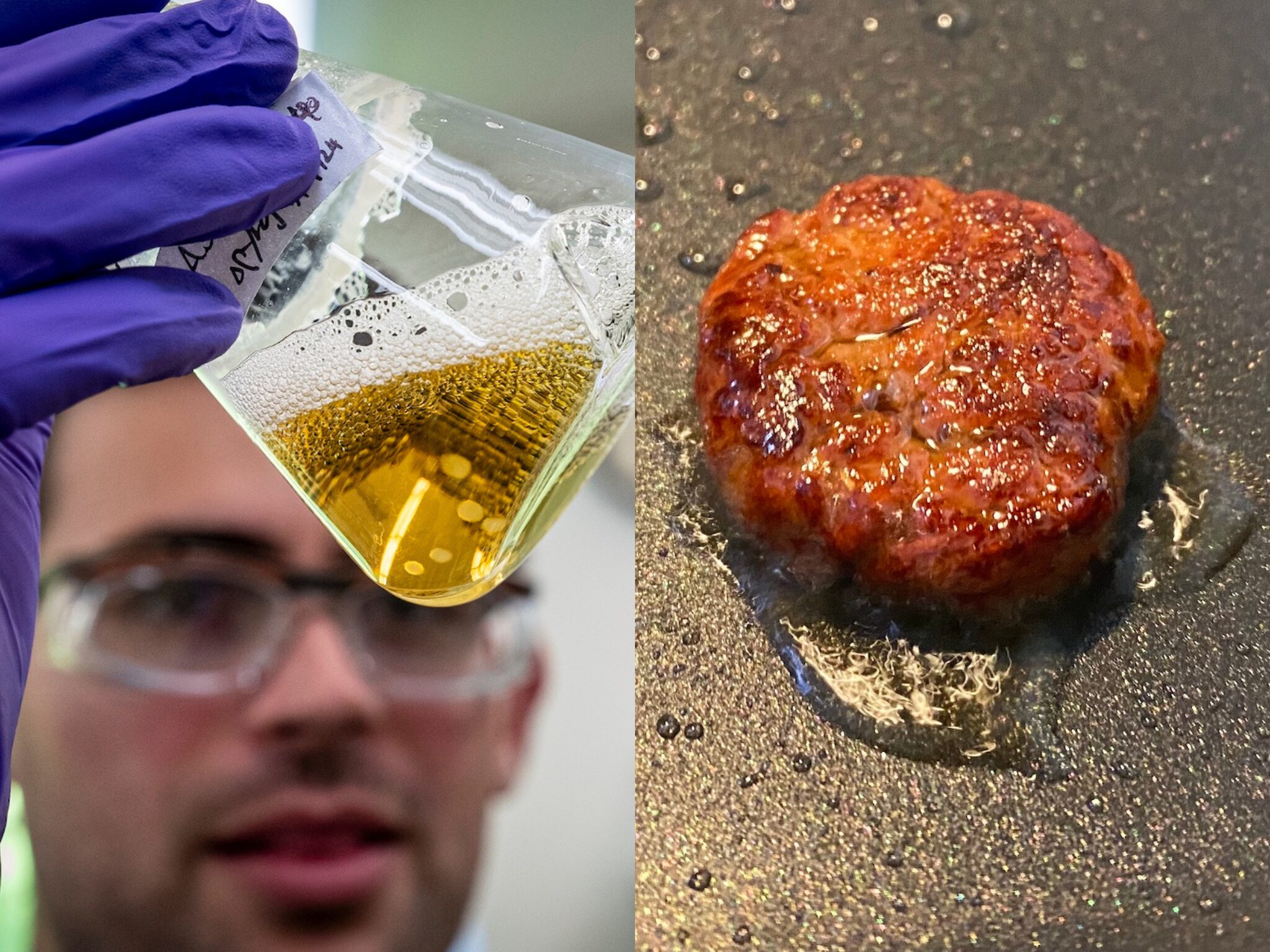Berkeley Researchers Earmark Koji Mould as Game-Changer for Meat Alternatives
5 Mins Read
A centuries-old ingredient that has been underutilised, according to researchers at the Lawrence Berkeley National Laboratory, koji mould could hold the key to better-tasting meat analogues with a superior texture.
In Japan, it’s known as the national fungus, forming the base of fermented foods like miso, shoyu and mirin, and alcoholic beverages such as shochu and soju, for centuries. But while companies like Prime Roots, Formo and Imagindairy are all using Aspergillus oryzae – or, as it’s popularly known, koji mould – to power their meat, egg and milk analogues, some are arguing that this fungi isn’t being harnessed to its full potential in modern food applications.
Scientists at the Lawrence Berkeley National Laboratory suggest that genetically engineering koji could unlock enhanced nutritional, taste and texture properties in meat analogues. Fungi-based foods are exploding in the alternative protein world, and the fungal protein market is predicted to reach nearly $400M by 2029. The Berkeley Lab argues that while a ton of biomanufactured products are made by engineered bacteria and yeast – which are “single-celled cousins of mushroom and mould” – multicellular fungi haven’t been harnessed as cellular factories to the same extent.
This is because their genomes are far more complex, with adaptations that make gene-editing a challenge. “These organisms have been used for centuries to produce food, and they are incredibly efficient at converting carbon into a wide variety of complex molecules, including many that would be almost impossible to produce using a classic host like brewer’s yeast or E. coli,” said senior author and UC Berkeley professor Jay Keasling.
“By unlocking koji mould through the development of these tools, we are unlocking the potential of a huge new group of hosts that we can use to make foods, valuable chemicals, energy-dense biofuels, and medicines. It’s a thrilling new avenue for biomanufacturing.”
Using CRISPR tech to transform koji into heme-containing meat

Vayu Hill-Maini, a postdoctoral researcher at Keasling’s lab, worked with colleagues at UC Berkeley, the Joint BioEnergy Institute, and the Novo Nordisk Foundation Center for Biosustainability to explore the potential of this strain of fungi, publishing the results in the peer-reviewed Nature Communications journal.
The team used CRISPR technology to develop a gene editing system that can make consistent and repeatable changes to the genome of koji. CRISPR itself has been touted as a potential embryonic treatment for hereditary diseases, but on the other hand, studies suggest altering the DNA of embryos or eggs and sperm could cause mutations that lead to other health threats.
Once the researchers established a toolkit of edits, they used the system to make modifications that elevate the mould as a food source. They first honed in on the production of the iron-based molecule heme (Impossible Foods makes a precision-fermented version for its burgers), which is responsible for giving meat its colour and defining flavours. Next, they focused on the production of ergothioneine, an antioxidant found exclusively in fungi, which is associated with cardiovascular health benefits.
These changes transformed the colour of the fungi from white to red, and after removing excess water and grinding the harvested biomass, the mould could be shaped into a patty and fried just as you would a burger.
Hill-Maini’s next target is texture, a major pain point for meat alternatives. In 2023, a study leveraging Kroger data from 60 million US households found that texture is the aspect Americans dislike most about vegan food. Globally, too, the texture of plant-based meat alternatives’ texture is as important as their conventional counterparts for 75% of consumers, but only about 60% are actually satisfied with the former’s texture.
It has led to other researchers also exploring the best way to improve the texture and mouthfeel of meat analogues. “We think that there’s a lot of room to explore texture by varying the fiber-like morphology of the cells. So, we might be able to programme the structure of the lot fibers to be longer which would give a more meat-like experience. And then we can think about boosting lipid composition for mouthfeel and further nutrition,” said Hill-Maini.
He added: “I’m really excited about how can we further look at the fungus and, you know, tinker with its structure and metabolism for food.”
A fungi project involving Michelin-starred chefs

The researchers indicated that this is only a snapshot of the potential of fungal genomes to create new foods, but said it demonstrates their promise as easy-to-grow protein sources that can eschew the long ingredient lists of many meat analogues, which represent another major consumer concern. Plus, these can also allow manufacturers to sidestep the cost barriers associated with cultivated meat, which has been facing fierce backlash from certain political groups.
Hill-Maini wants to make the next generation of fungi-based products not just palatable, but really desirable to consumers. In a separate research project, he and Keasling collaborated with Copenhagen-based Michelin-starred eatery Alchemist to explore the potential of a fellow multicellular fungus, Neurospora intermedia, which has been traditionally used in Indonesia to make oncom (produced from the fermentation of byproducts like okara).
The chefs and scientists discovered that this strain can produce many enzymes as it grows. When grown on starchy rice, it secretes an enzyme that liquifies the rice and makes it intensely sweet. “We developed a process with just three ingredients – rice, water, and fungus – to make a beautiful, striking orange-colored porridge,” said Hill-Maini. “That became a new dish on the tasting menu that utilizes fungal chemistry and colour in a dessert. And I think that what it really shows is that there’s opportunity to bridge the laboratory and the kitchen.”
Hill-Maini called it a “fundamental aspect of synthetic biology that we’re benefitting from organisms that have evolved to be really good at certain things”. Expanding on his team’s approach, he added: “What we’re trying to do is to look at what is the fungus making and try to kind of unlock and enhance it. And I think that’s an important angle that we don’t need to introduce genes from wildly different species. We’re investigating how we can stitch things together and unlock what’s already there.”
Backed by the US Department of Energy Office of Science, can the Berkeley Lab change how we see fungi and make a mark in a burgeoning alternative protein category?




